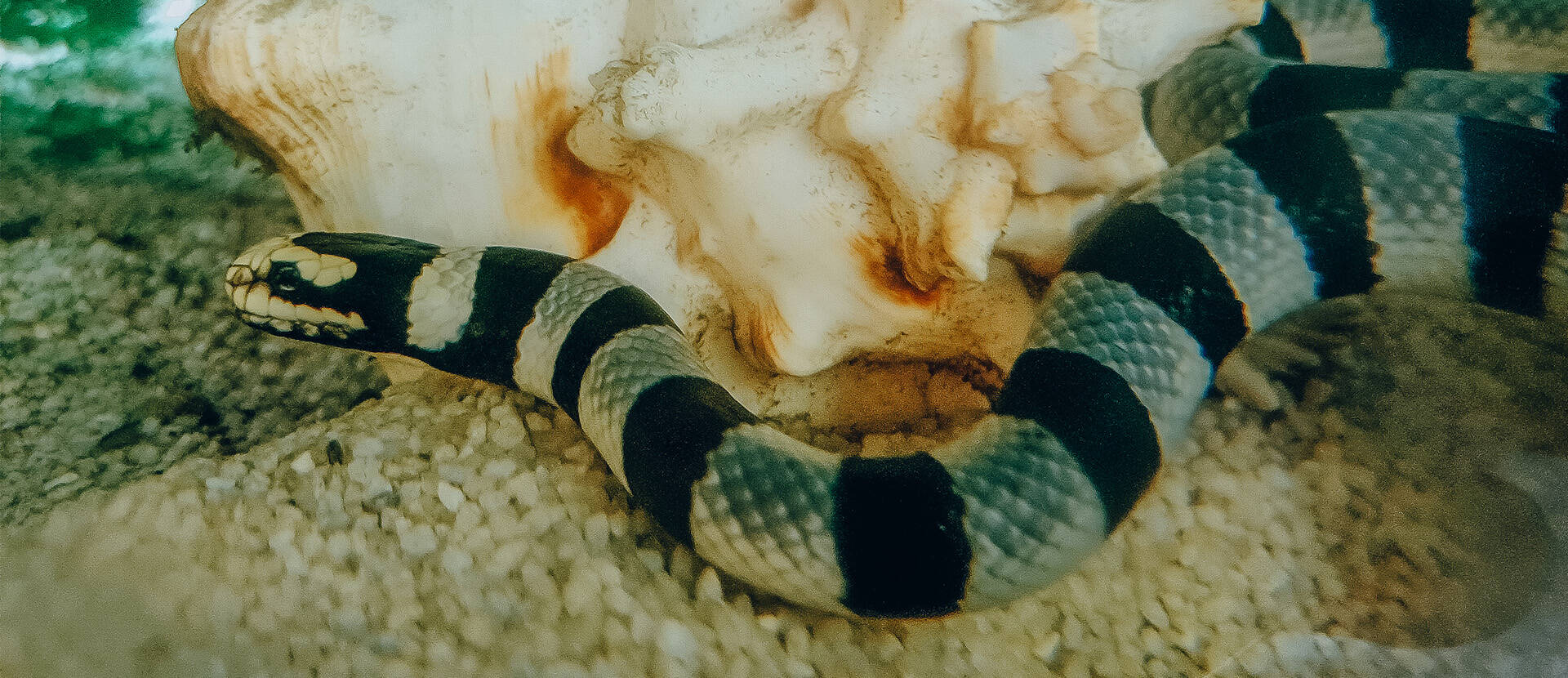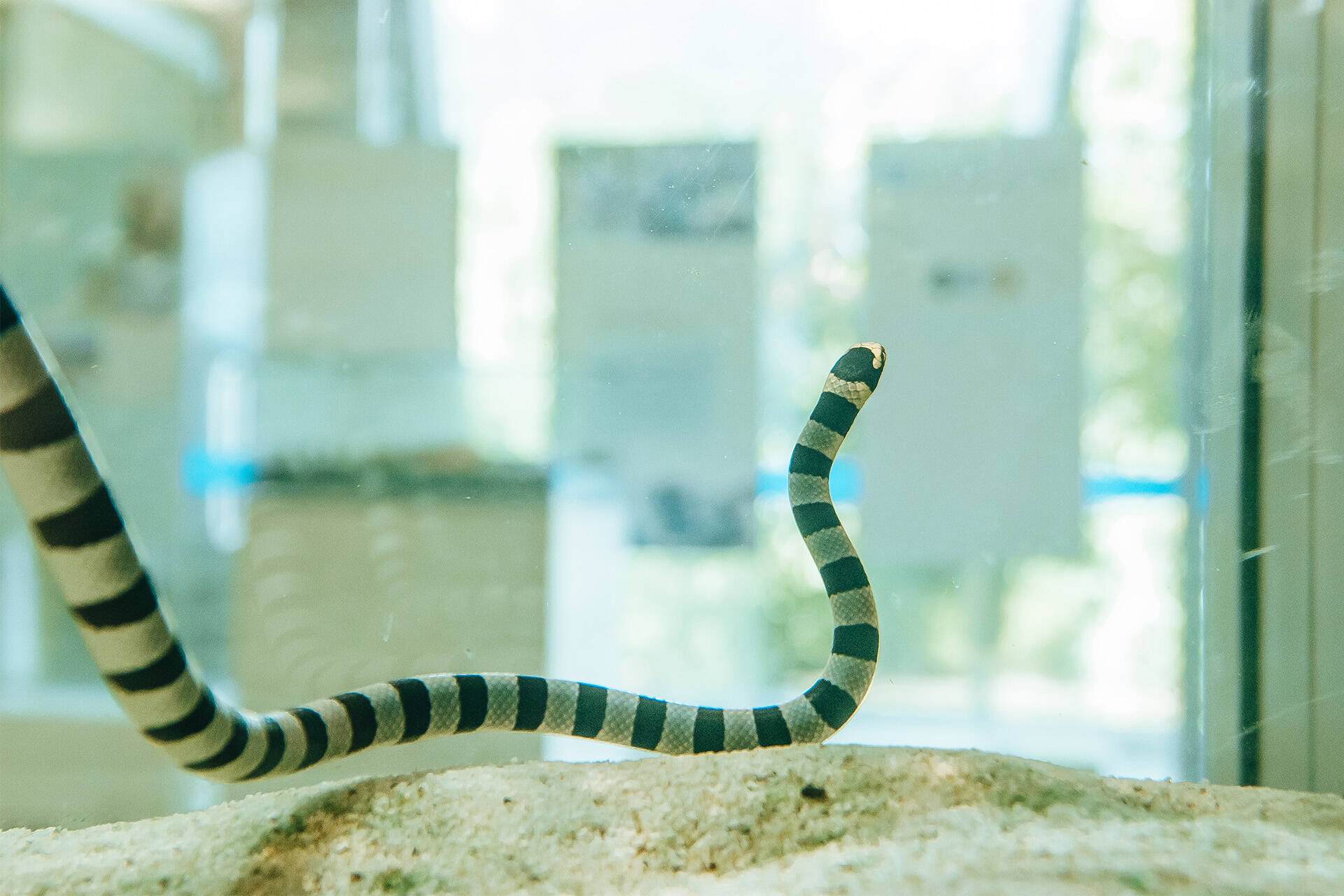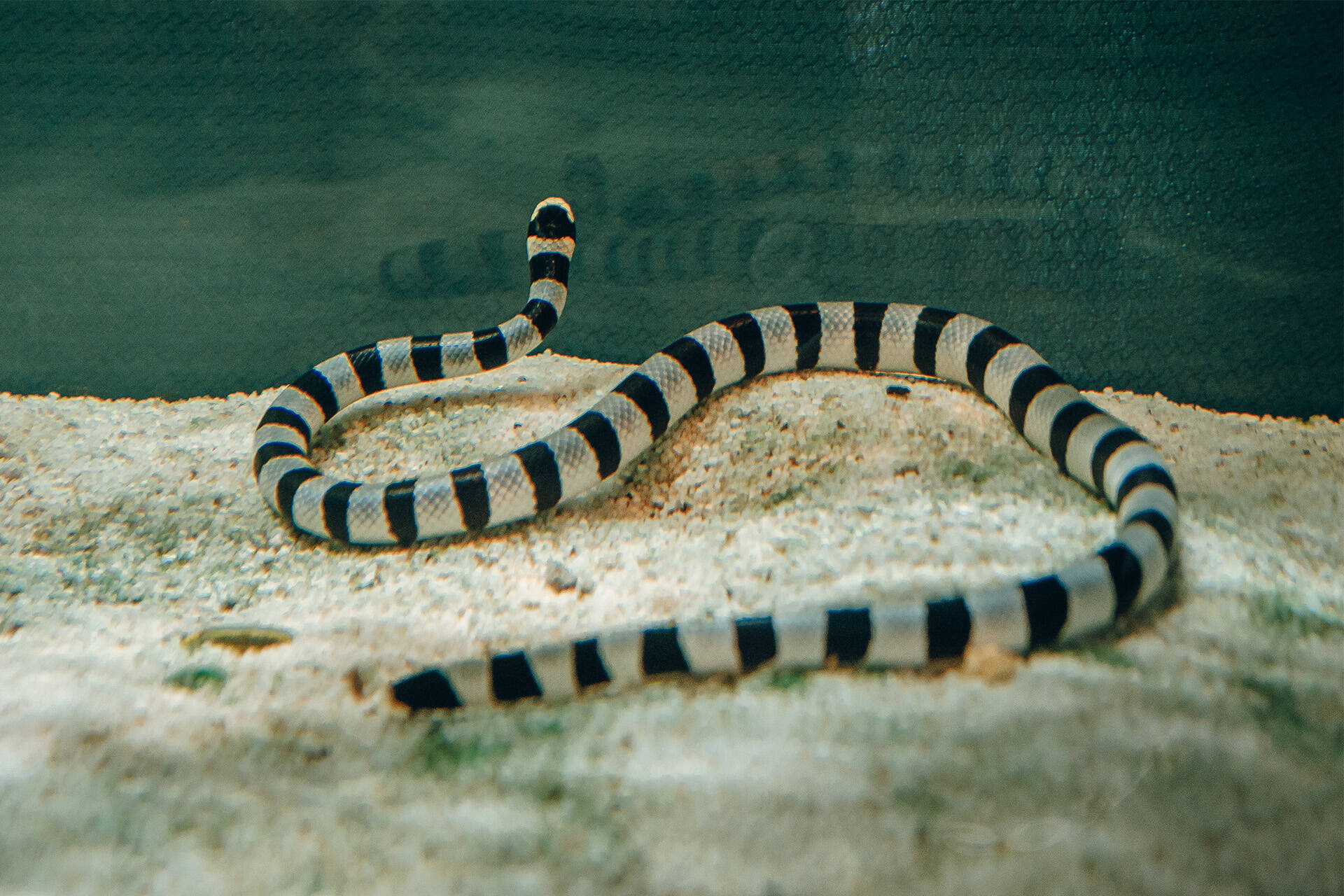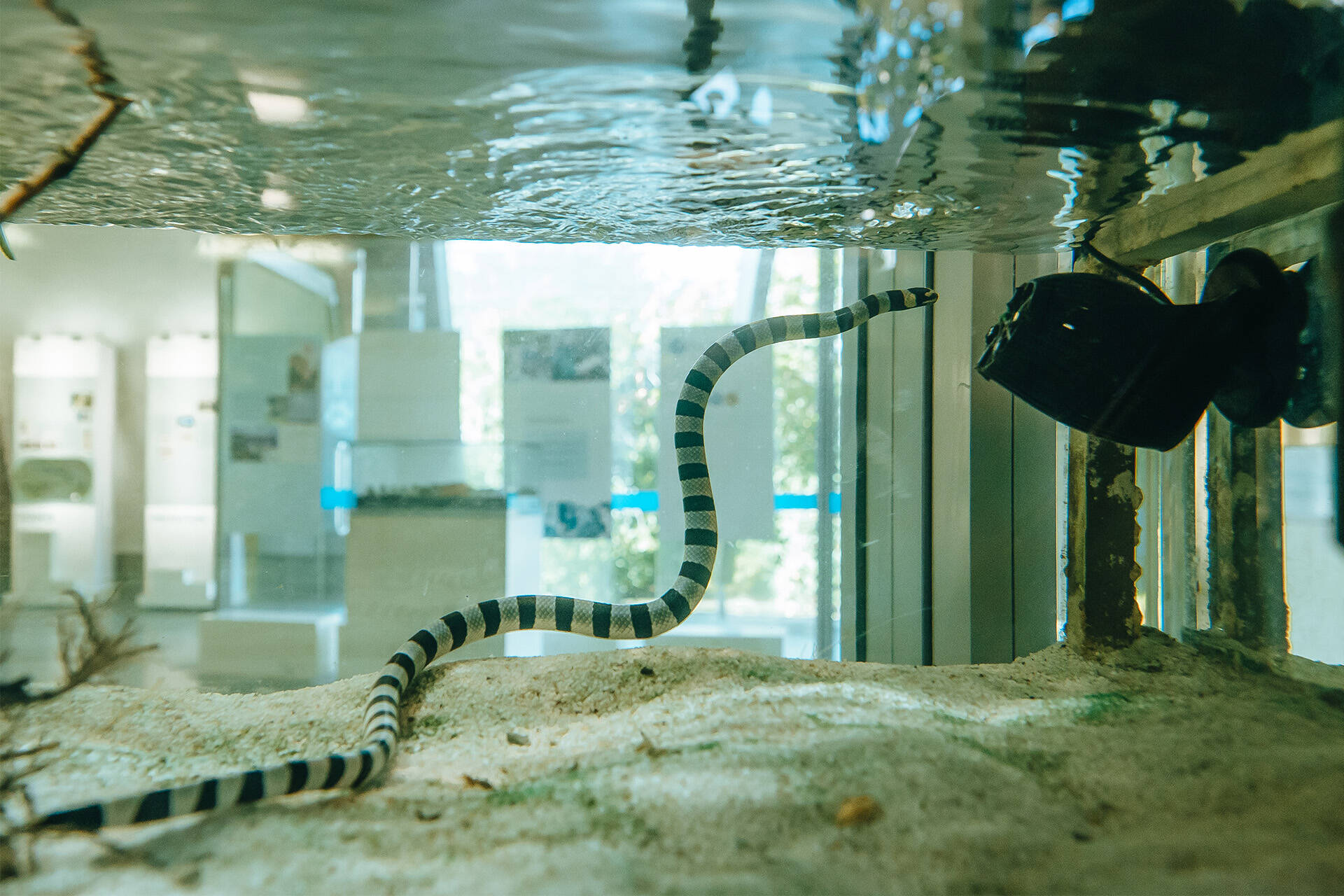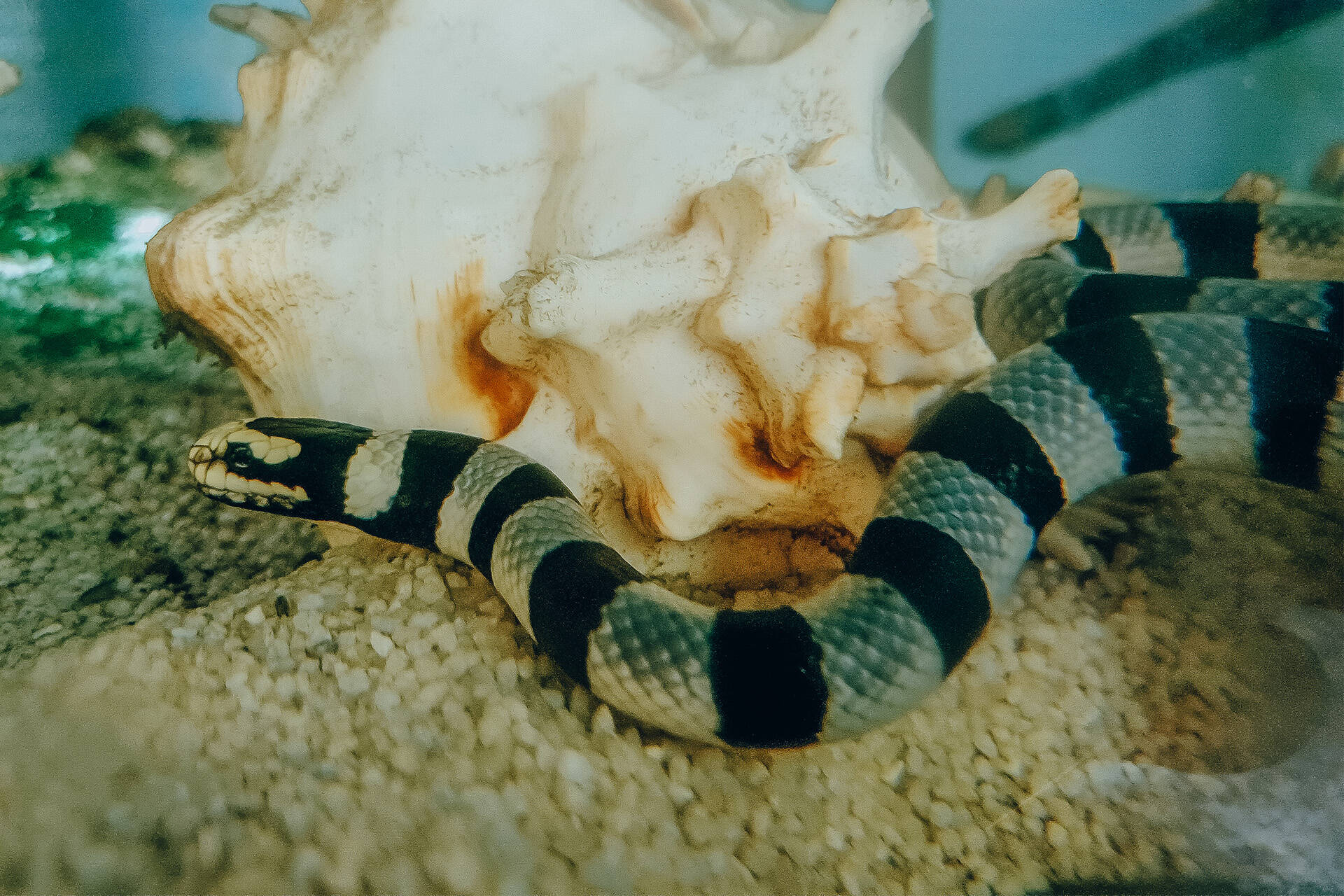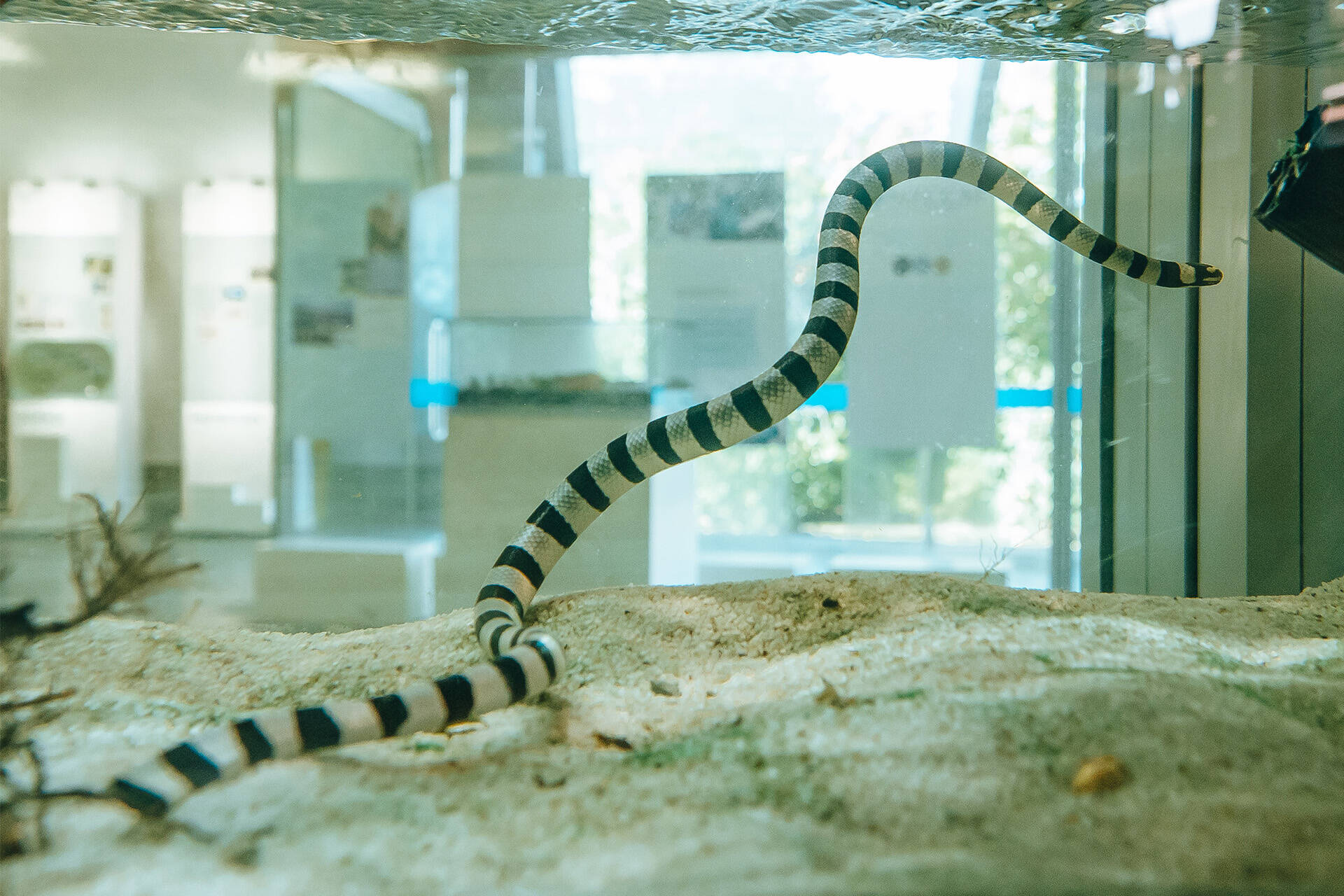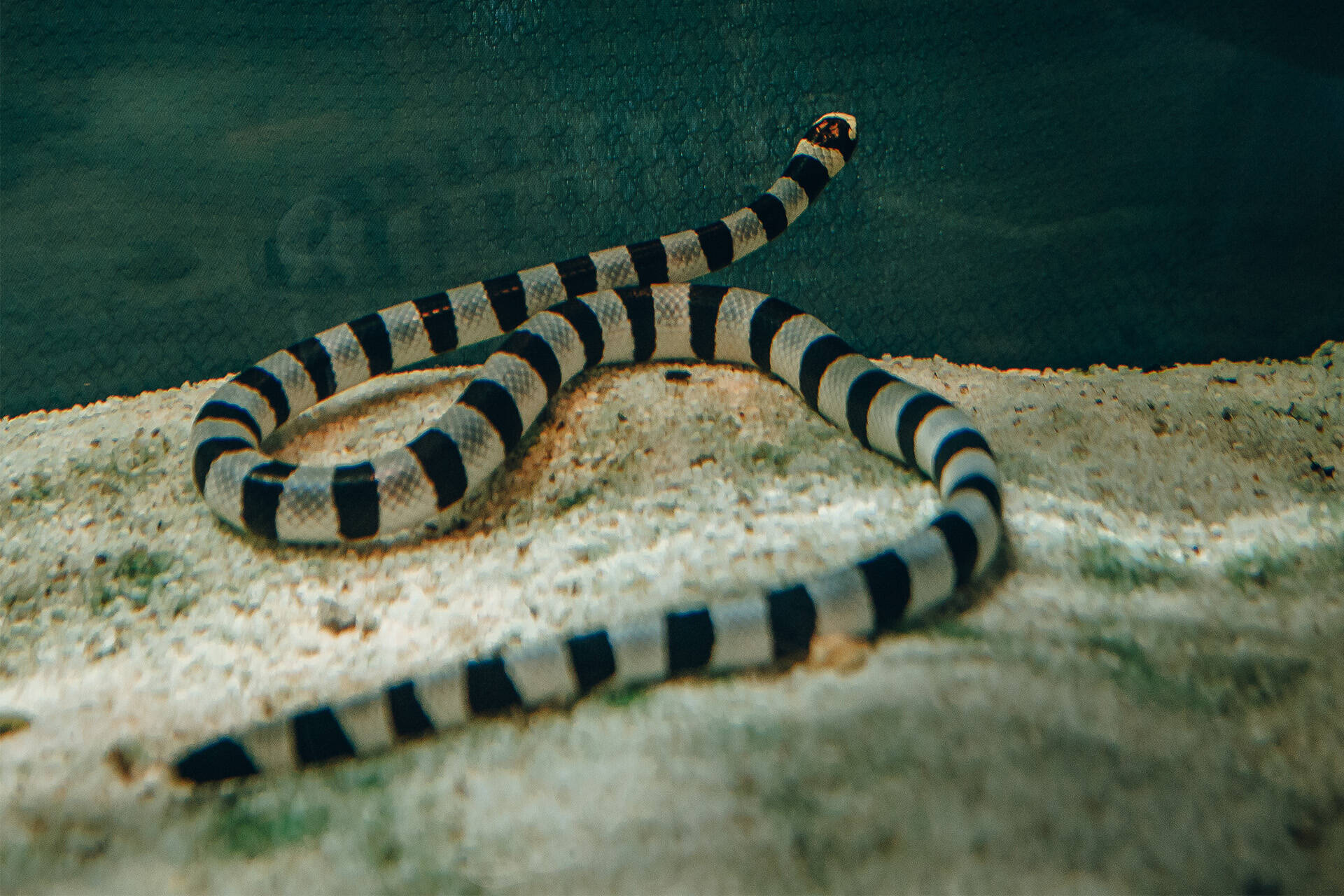An underweight and dehydrated sea krait found on Takapuna beach and brought into Auckland Zoo in December 2022 - now rehabilitated but unable to be returned to the wild, is to play a key advocacy role for this beautiful but frequently misunderstood species.
From today, visitors to Auckland Zoo will be able to see and learn about the yellow-lipped sea krait (a species of sea snake in the genus Laticauda) from the visitor viewing gallery of the Zoo’s vet hospital, the New Zealand Centre for Conservation Medicine (NZCCM).
“Sea kraits are semi-aquatic and live in warm waters of the tropical Indo-Pacific region and are rare accidental visitors to New Zealand waters, but as our climate continues to warm and impact sea temperatures and currents, we’re likely to see more of them,” says Auckland Zoo’s head of animal care and conservation and herpetologist, Richard Gibson.


